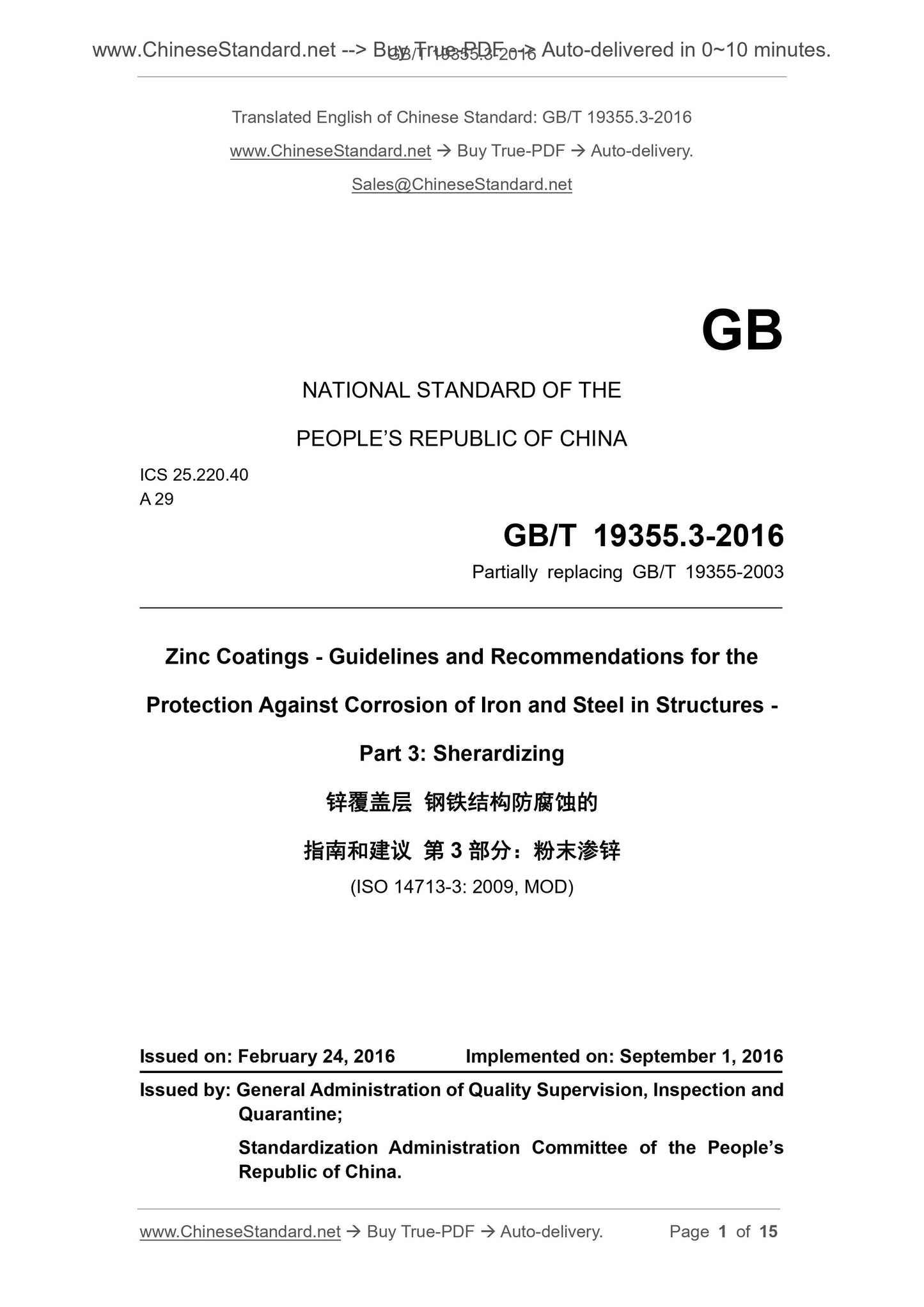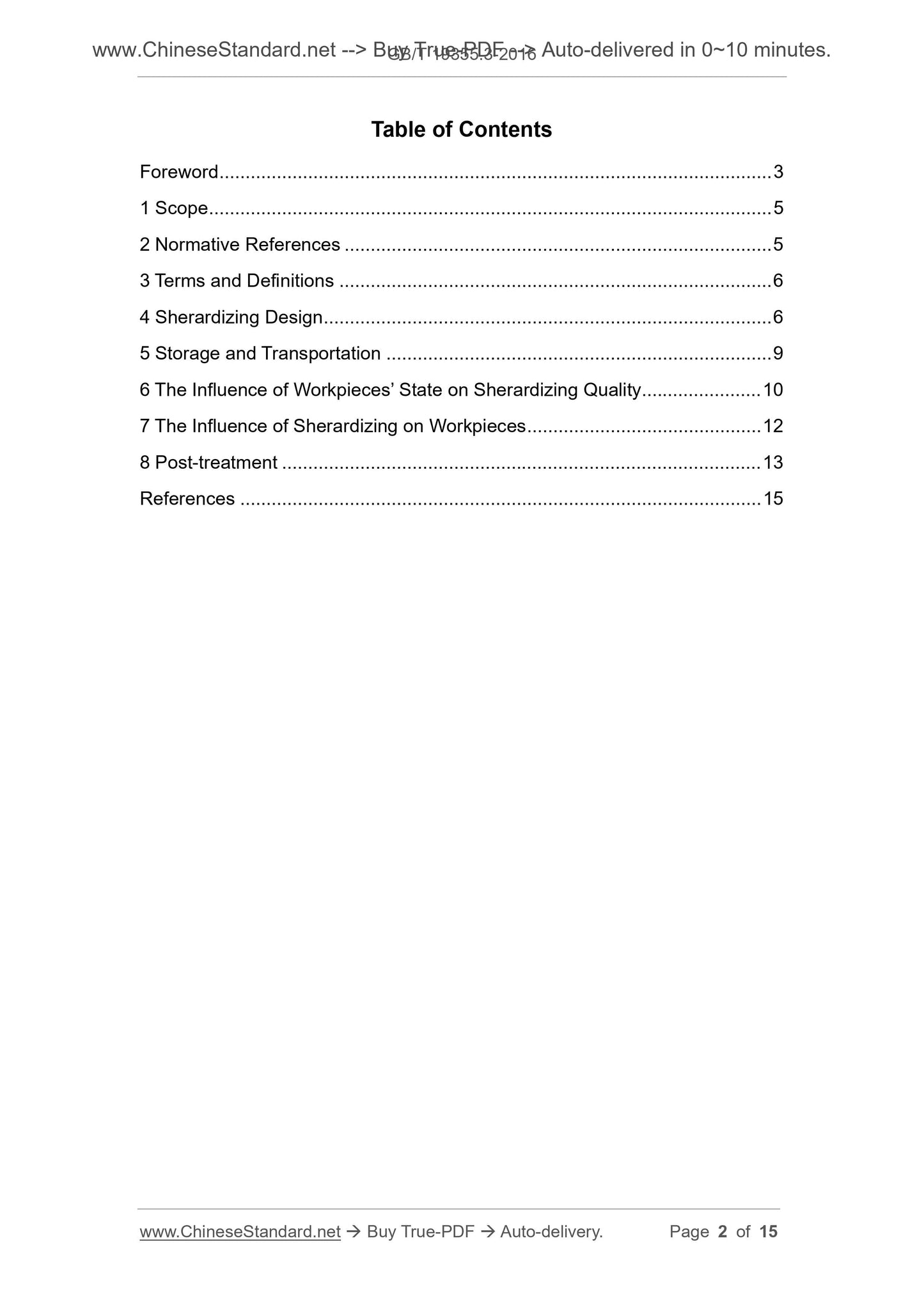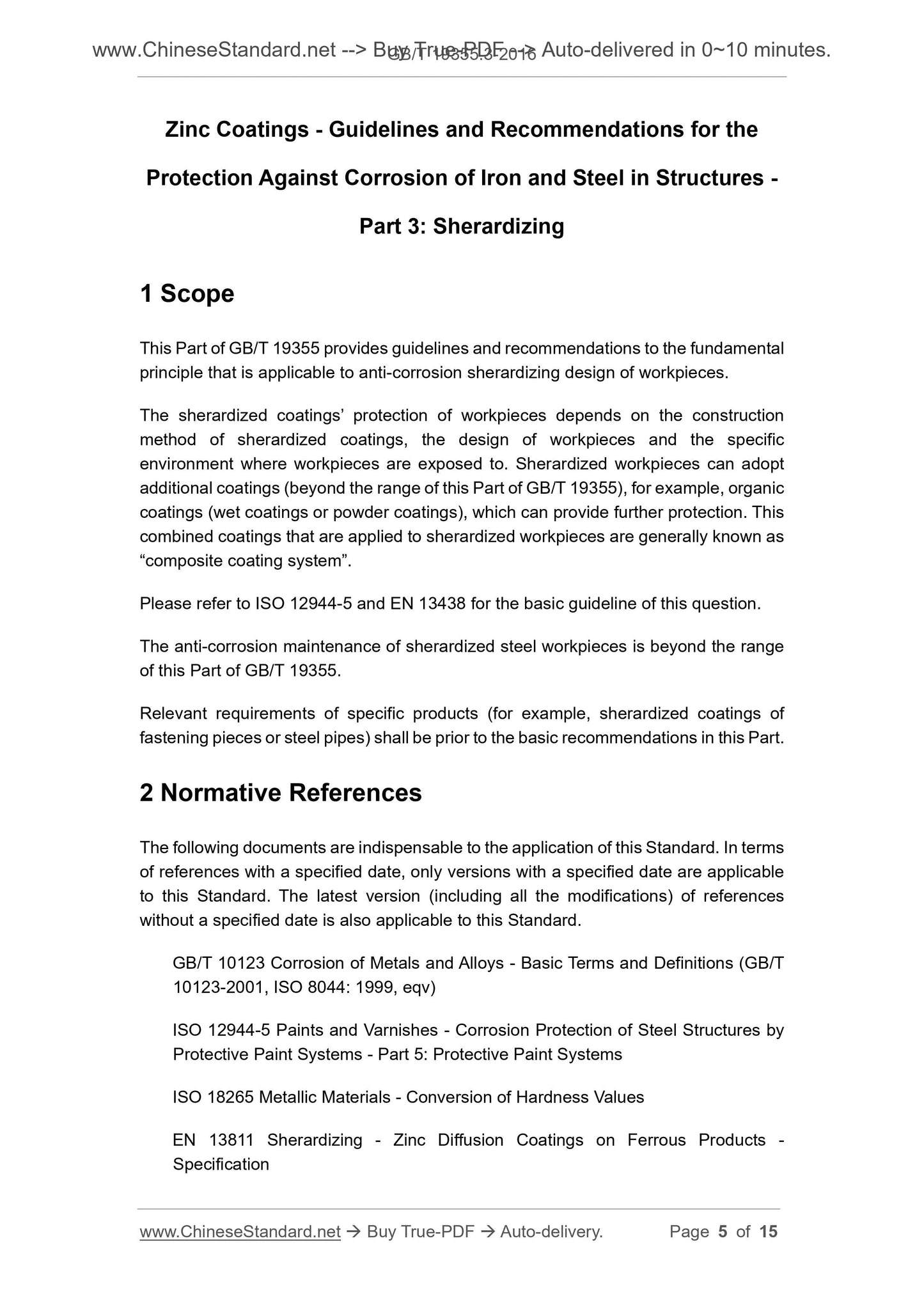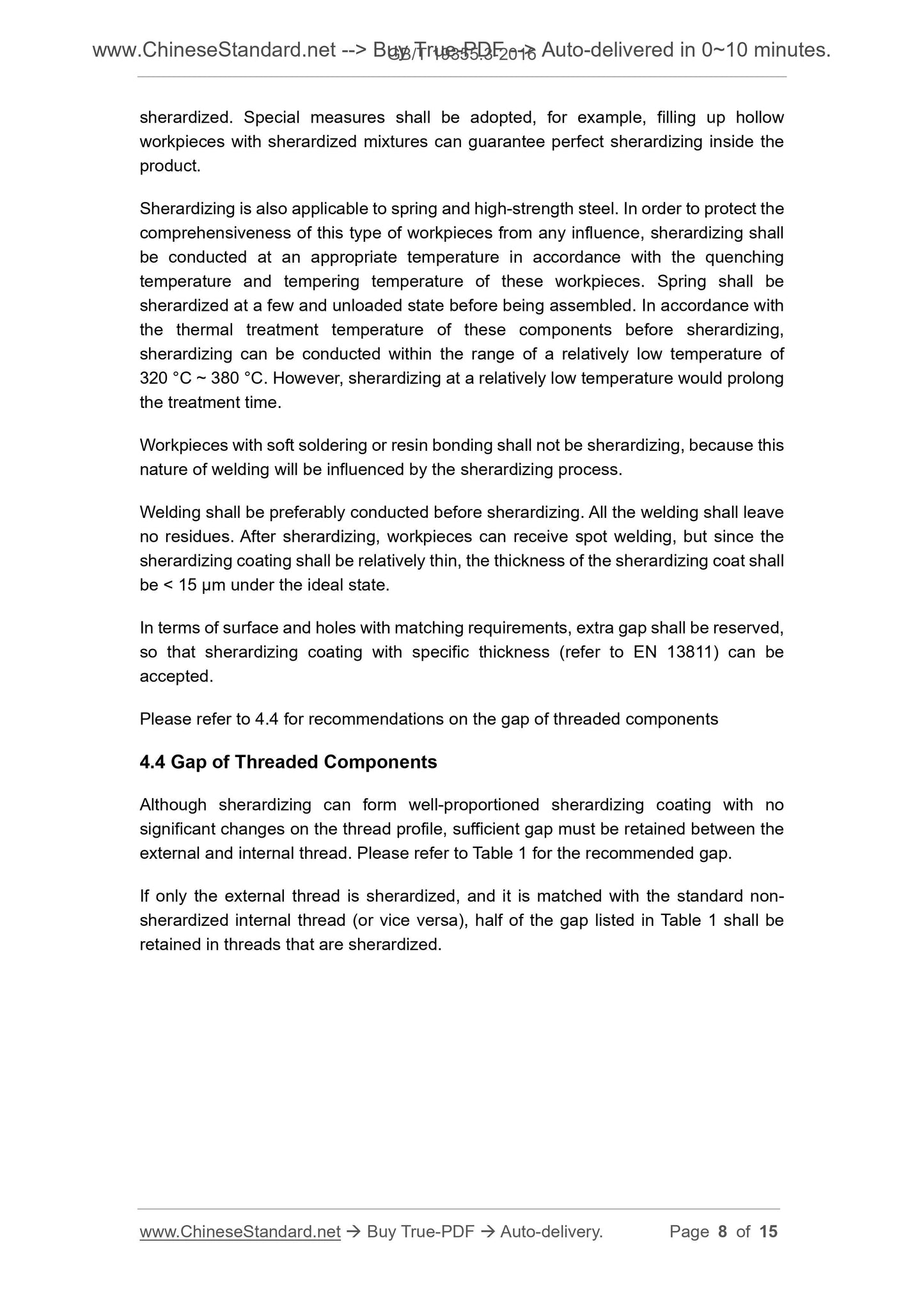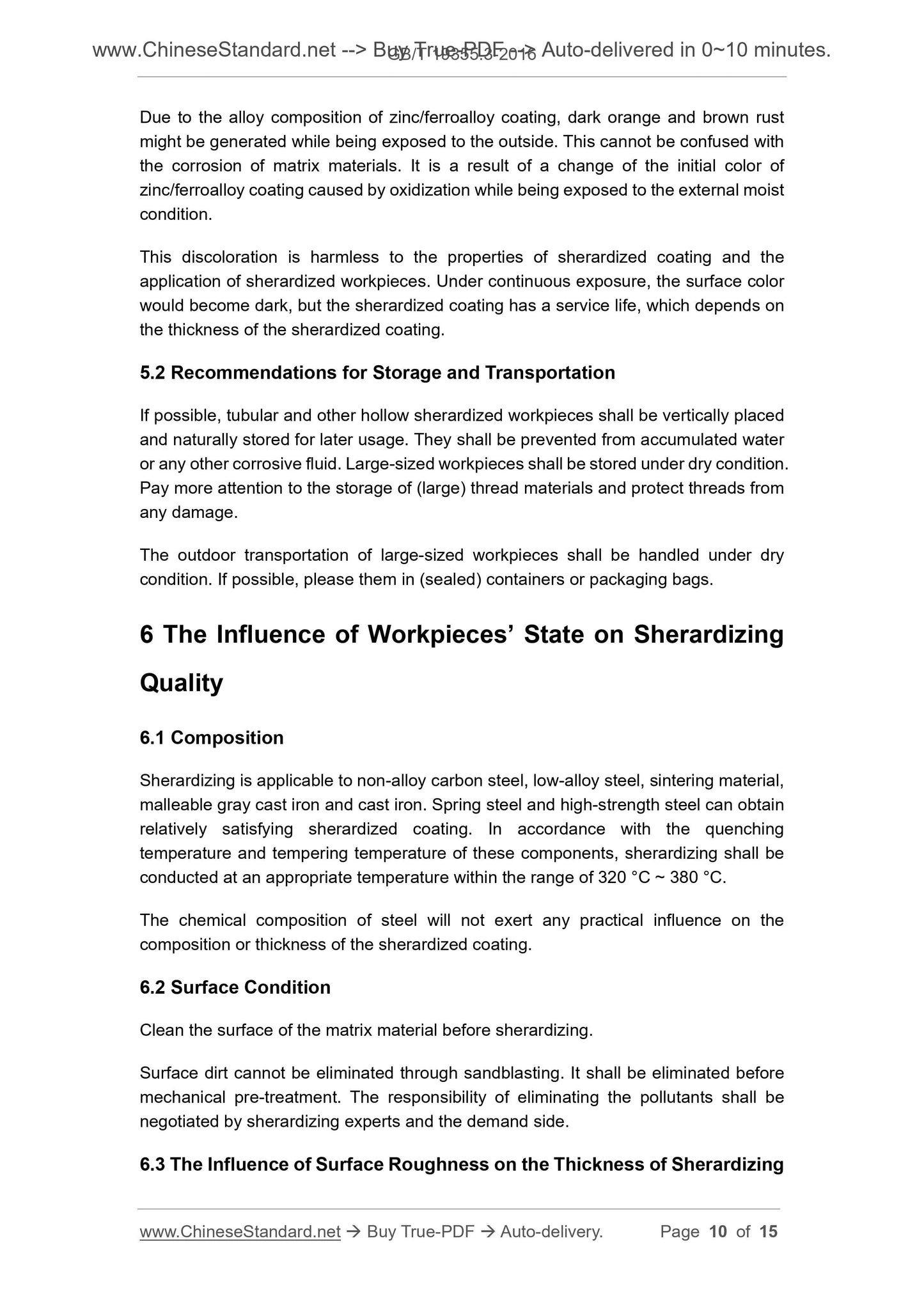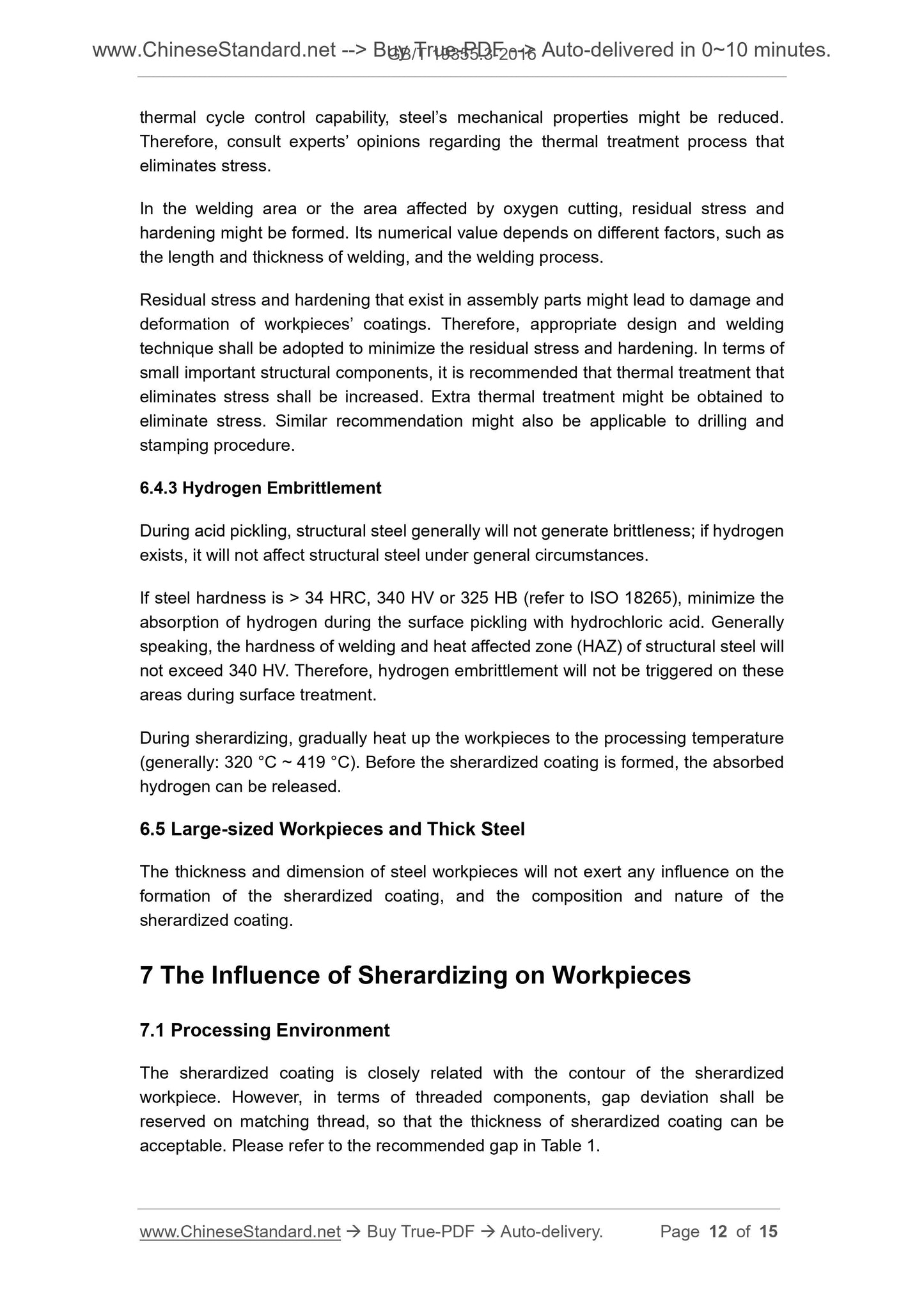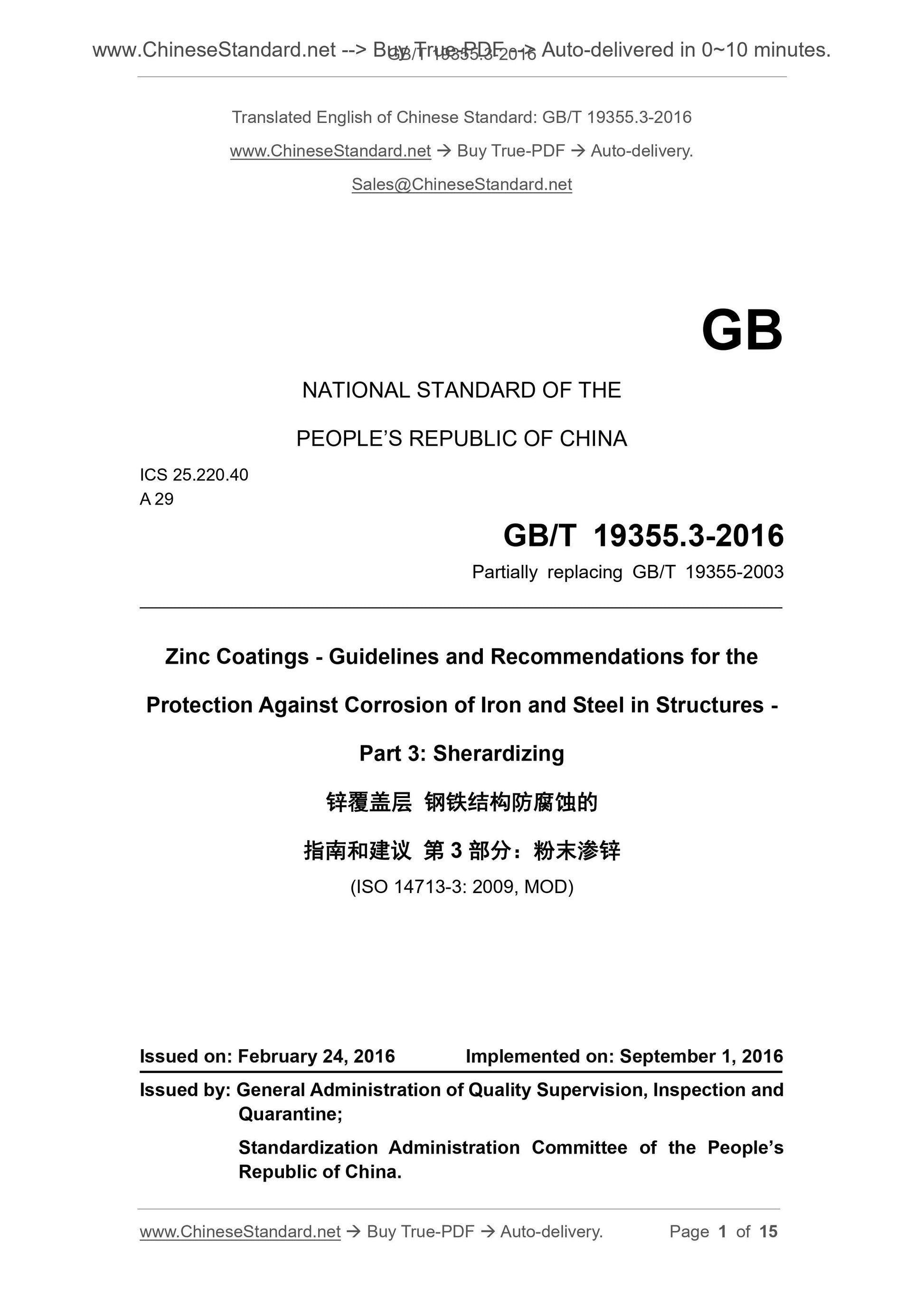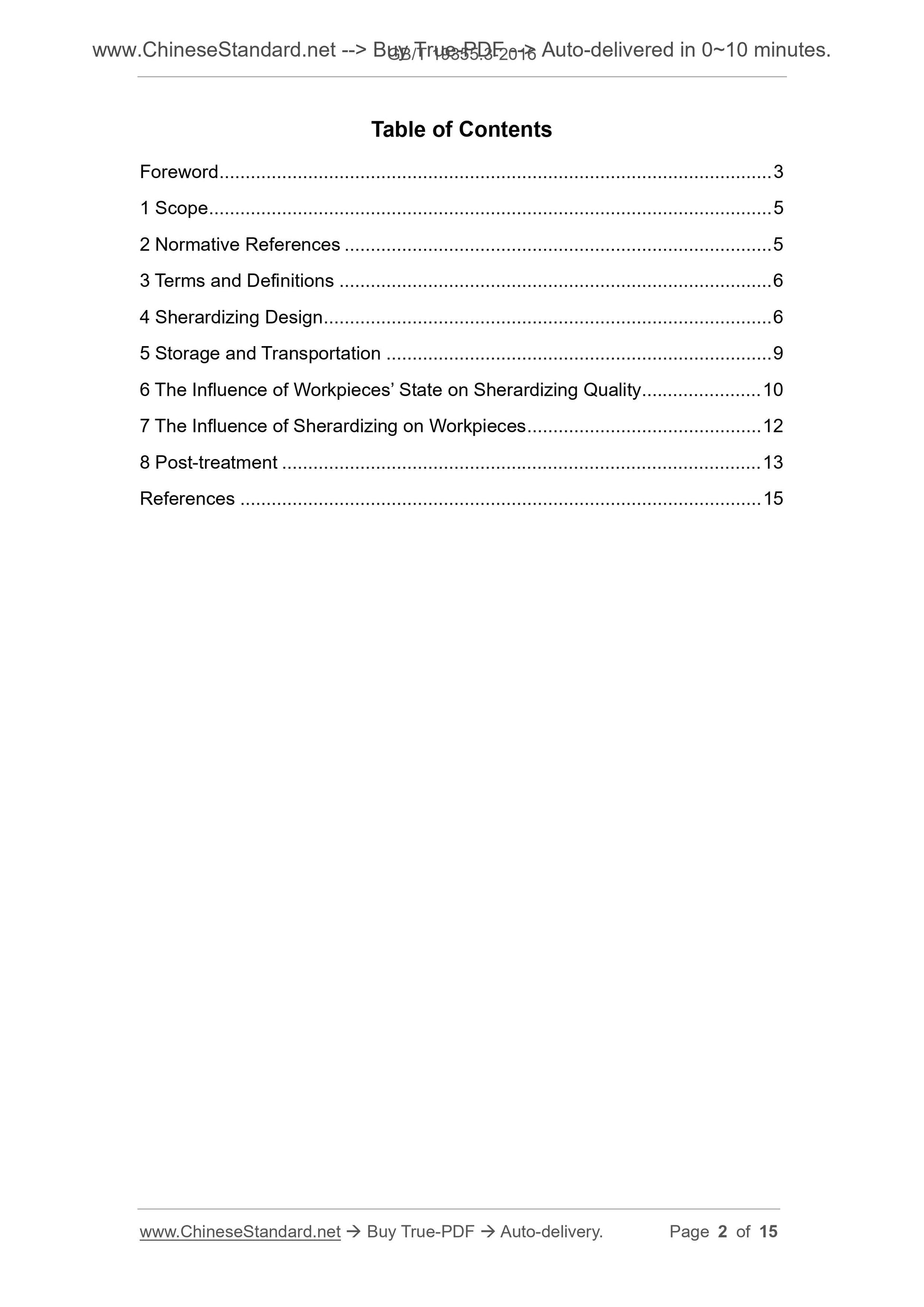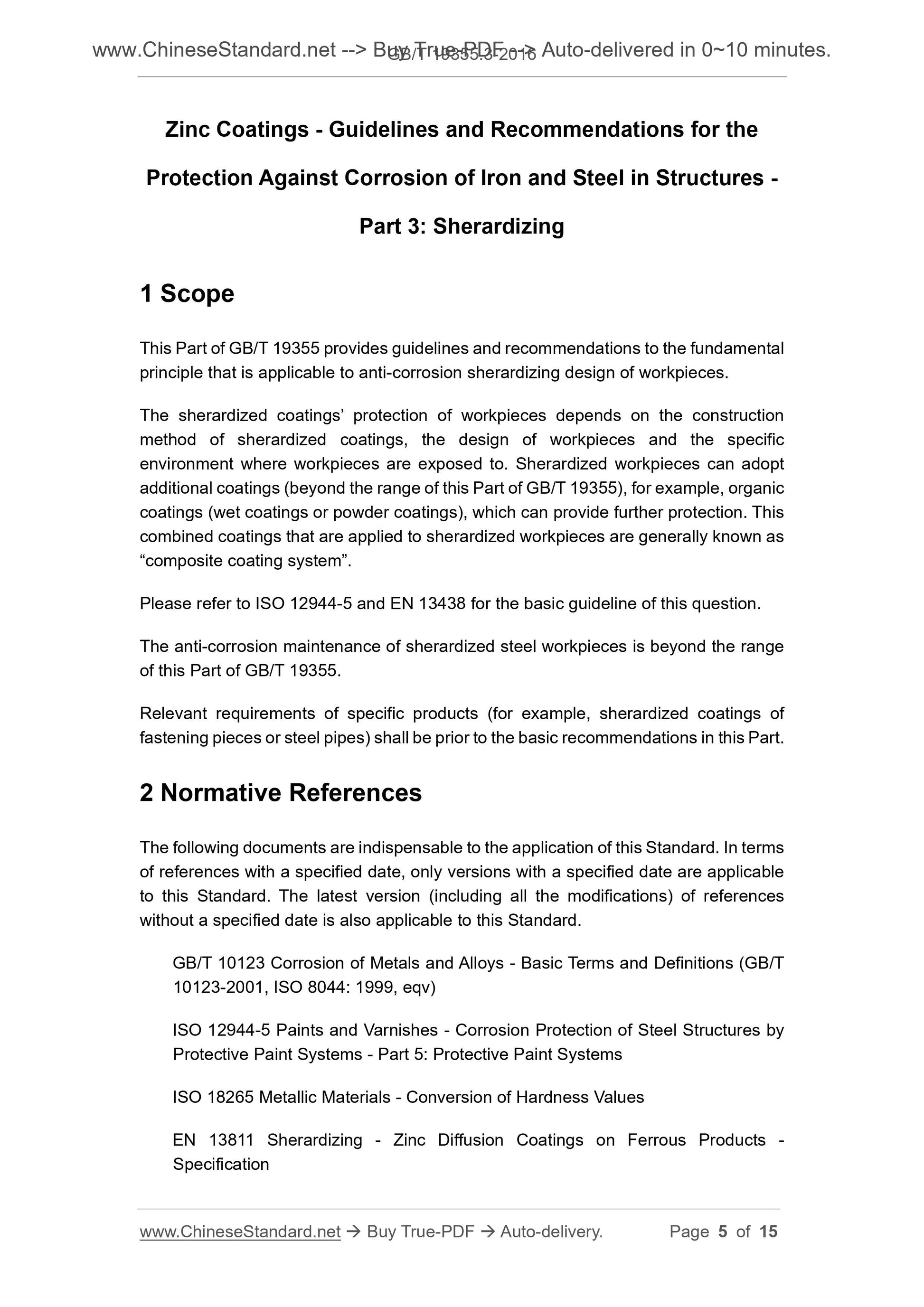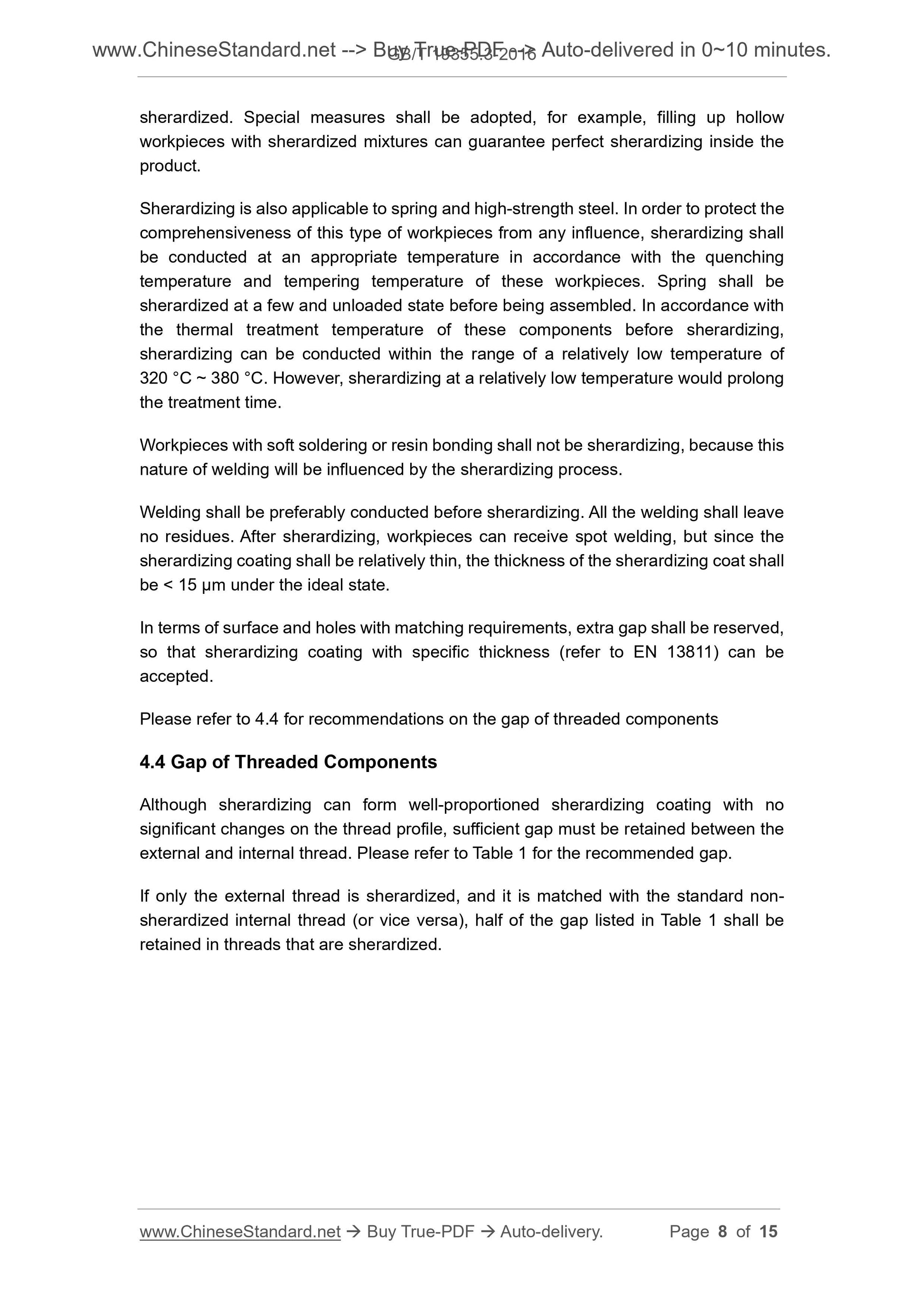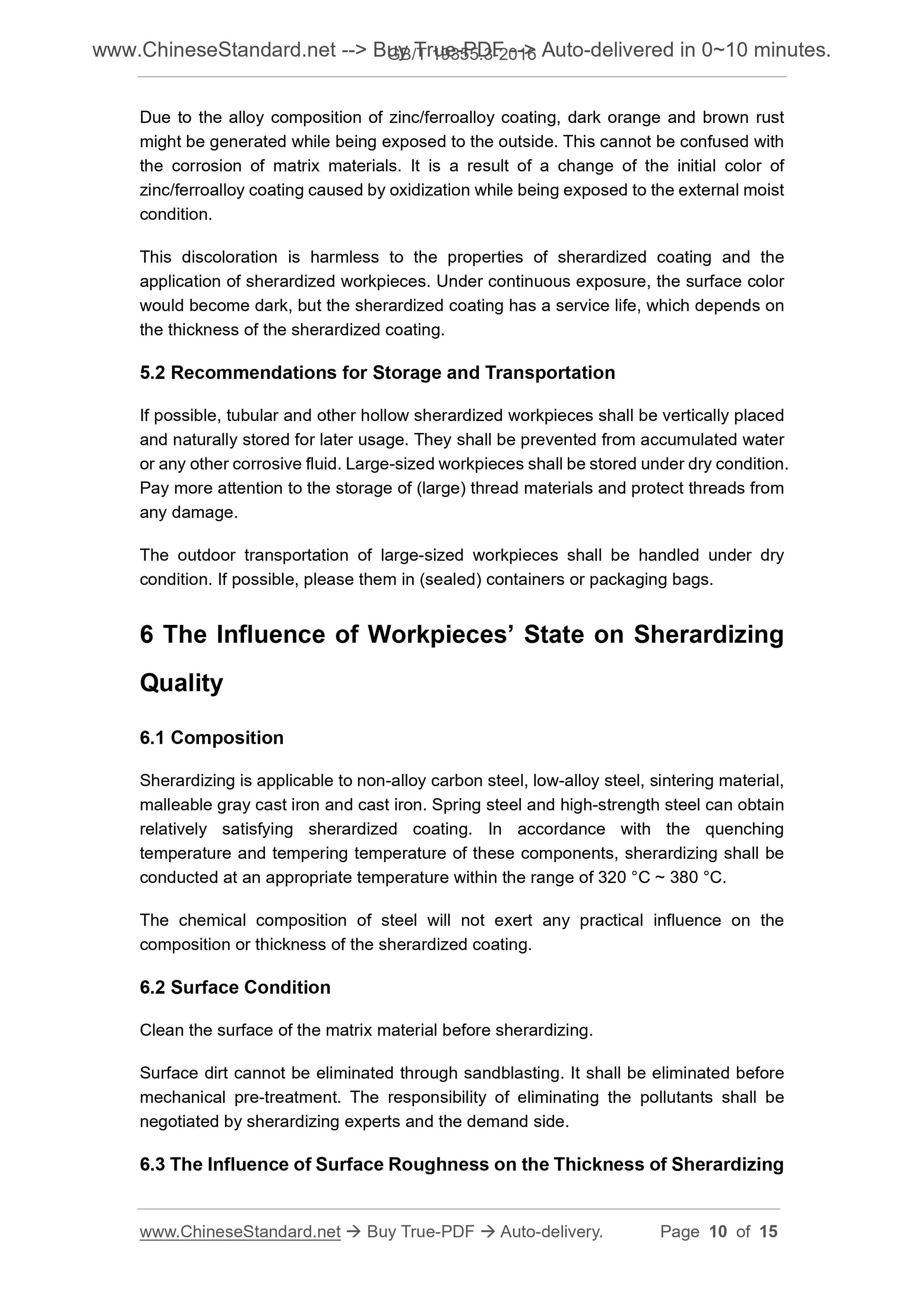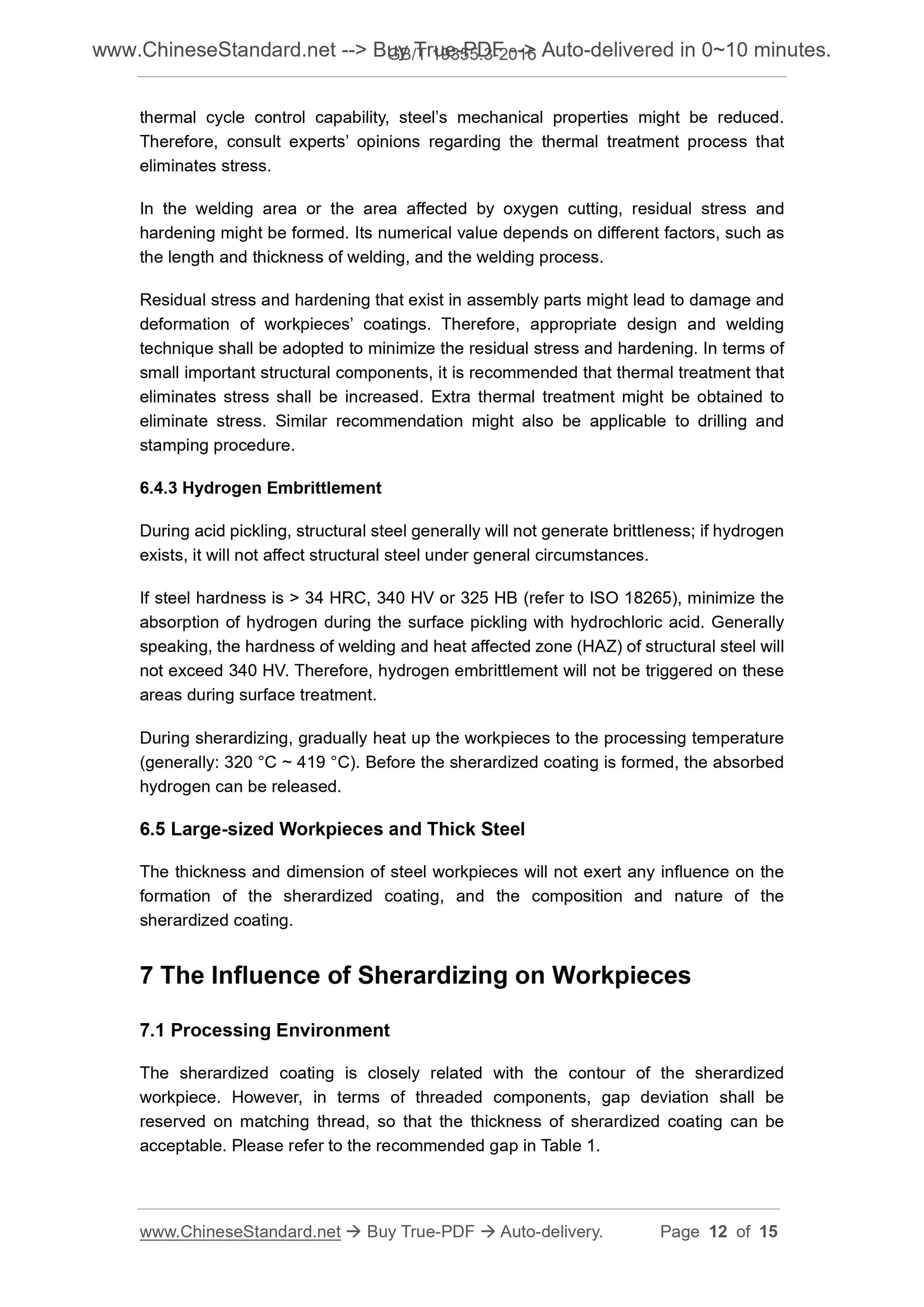1
/
of
6
www.ChineseStandard.us -- Field Test Asia Pte. Ltd.
GB/T 19355.3-2016 English PDF (GB/T19355.3-2016)
GB/T 19355.3-2016 English PDF (GB/T19355.3-2016)
Regular price
$150.00
Regular price
Sale price
$150.00
Unit price
/
per
Shipping calculated at checkout.
Couldn't load pickup availability
GB/T 19355.3-2016: Zinc coatings -- Guidelines and recommendations for the protection against corrosion of iron and steel in structures -- Part 3: Sherardizing
Delivery: 9 seconds. Download (and Email) true-PDF + Invoice.Get Quotation: Click GB/T 19355.3-2016 (Self-service in 1-minute)
Newer / historical versions: GB/T 19355.3-2016
Preview True-PDF
Scope
This Part of GB/T 19355 provides guidelines and recommendations to the fundamentalprinciple that is applicable to anti-corrosion sherardizing design of workpieces.
The sherardized coatings’ protection of workpieces depends on the construction
method of sherardized coatings, the design of workpieces and the specific
environment where workpieces are exposed to. Sherardized workpieces can adopt
additional coatings (beyond the range of this Part of GB/T 19355), for example, organic
coatings (wet coatings or powder coatings), which can provide further protection. This
combined coatings that are applied to sherardized workpieces are generally known as
“composite coating system”.
Please refer to ISO 12944-5 and EN 13438 for the basic guideline of this question.
The anti-corrosion maintenance of sherardized steel workpieces is beyond the range
of this Part of GB/T 19355.
Relevant requirements of specific products (for example, sherardized coatings of
fastening pieces or steel pipes) shall be prior to the basic recommendations in this Part.
Basic Data
| Standard ID | GB/T 19355.3-2016 (GB/T19355.3-2016) |
| Description (Translated English) | Zinc coatings -- Guidelines and recommendations for the protection against corrosion of iron and steel in structures -- Part 3: Sherardizing |
| Sector / Industry | National Standard (Recommended) |
| Classification of Chinese Standard | A29 |
| Classification of International Standard | 25.220.40 |
| Word Count Estimation | 11,119 |
| Date of Issue | 2016-02-24 |
| Date of Implementation | 2016-09-01 |
| Older Standard (superseded by this standard) | GB/T 19355-2003 |
| Quoted Standard | GB/T 10123; ISO 12944-5; ISO 18265; EN 13811 |
| Adopted Standard | ISO 14713-3-2009, MOD |
| Regulation (derived from) | National Standard Announcement No |
| Issuing agency(ies) | General Administration of Quality Supervision, Inspection and Quarantine of the People's Republic of China, Standardization Administration of the People's Republic of China |
Share
